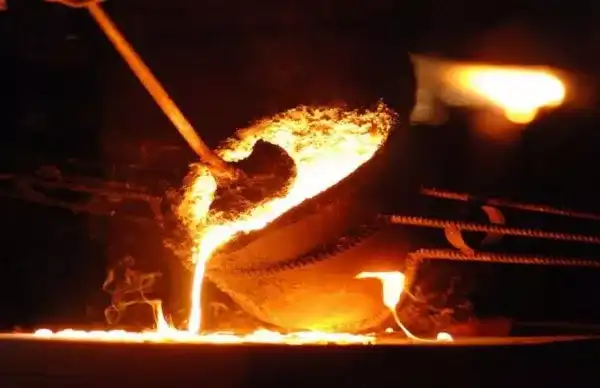Casting is one of the most ancient yet enduringly relevant manufacturing processes. From producing bronze tools in antiquity to creating high-performance aerospace components today, casting has shaped human civilization and continues to play a pivotal role in modern industry. As a fundamental metal forming method, casting enables the economical production of components with complex geometries, a wide range of materials, and varying sizes — from gram-level precision parts to multi-ton structural components. This article comprehensively explores what casting is, how it works, its various types, materials, advantages, limitations, applications, and its comparison with injection molding, offering engineers and professionals a structured understanding of the process.

1. What is Casting?
Casting is a manufacturing process in which a liquid material, most commonly molten metal, is poured into a mold that contains a cavity shaped to the desired component geometry. Upon solidification, the casting is removed and may undergo additional operations such as heat treatment, machining, or surface finishing.
Casting is unique in its ability to create complex internal and external shapes in a single operation. Unlike machining, which removes material, or forging, which deforms it under pressure, casting allows manufacturers to achieve intricate details, internal channels, and thin or thick sections economically. This makes it especially important in industries where both performance and design freedom are critical.
2. How Does Casting Work?
The casting process involves several essential steps:
- Melting and Pouring: Raw metal or alloy is charged into a furnace and heated to its liquid state. The melt is then degassed, filtered, and adjusted chemically to ensure it meets specifications. The liquid metal is poured carefully into the mold, either by hand or automatically.
- Filling and Solidification: The molten metal fills the mold cavity under gravity, centrifugal force, or applied pressure. As it cools, solidification begins, starting at the mold walls and progressing inward. Controlled cooling rates are critical to avoid defects like shrinkage cavities or internal stresses.
- Mold Removal and Finishing: After solidification, the casting is extracted from the mold. If the mold is expendable (e.g., sand), it is broken away; if permanent, it is opened and reused. The casting is then cleaned, gates and risers are removed, and, if required, heat treated to enhance mechanical properties.
Process parameters such as pouring temperature, cooling rate, mold design, and alloy composition significantly affect the quality, strength, and dimensional accuracy of the casting.
3. Different Types of Casting Methods
Casting can be classified into several methods based on mold material, filling mechanism, and application requirements:
3.1. Sand Casting
This traditional process uses bonded sand to form molds, which are cheap and flexible. Sand casting is highly versatile, suitable for small batches and very large components such as engine blocks and ship propellers.
Advantages: Low cost, adaptability to complex shapes and large sizes.
Disadvantages: Rougher surface finish, lower dimensional accuracy, higher risk of defects.
3.2. Gravity Die Casting
Also known as permanent mold casting, this method uses a reusable metallic mold filled by gravity. It produces denser and more precise castings than sand casting. Often applied to aluminum alloy parts in automotive and machinery sectors.
3.3. High-Pressure Die Casting
Molten metal is injected at high speed and pressure into a metallic mold. This method is ideal for high-volume production of thin-walled, high-precision parts like housings, brackets, and consumer electronics.
3.4. Investment Casting
Involves creating a wax pattern, coating it with a ceramic shell, removing the wax, and pouring metal into the resulting mold. This produces highly intricate, dimensionally accurate, and smooth-surfaced parts — commonly used for turbine blades, jewelry, and surgical tools.
3.5. Continuous Casting
Used mainly in steel and aluminum industries, continuous casting solidifies metal directly into billets, slabs, or blooms in a continuous process, minimizing intermediate steps and ensuring uniform properties.
3.6. Centrifugal Casting
The mold is rotated during pouring so that centrifugal force pushes the molten metal against the mold wall. This yields defect-free tubular or ring-shaped components, widely used for pipes, bearings, and bushings.
3.7. Modern and Emerging Methods
Innovations include vacuum casting (to minimize gas porosity), semi-solid casting (for improved mechanical properties), and additive-manufactured molds enabling highly customized and efficient production.
4. Materials Used in Casting
Casting supports a vast selection of metals and alloys, enabling tailored material properties for different applications:
- Aluminum Alloys: Lightweight, corrosion-resistant, good thermal and electrical conductivity; ideal for automotive and aerospace components.
- Magnesium Alloys: Lowest density of structural metals, with good strength-to-weight ratio; suited for lightweight applications.
- Copper Alloys (Bronze, Brass): Excellent corrosion resistance, wear resistance, and thermal/electrical conductivity; common in plumbing, marine, and decorative applications.
- Cast Iron: Strong in compression, good damping capacity, and cost-effective; widely used in engine blocks, machine bases, and pipes.
- Steel: Superior strength and toughness; used in demanding structural and wear-resistant components.
Factors such as fluidity, freezing range, shrinkage, and mechanical property requirements determine material selection for a given casting.
5. Advantages of Casting
- Design Flexibility: Capable of producing very complex shapes, including internal channels and undercuts, in a single operation.
- Material Versatility: Accommodates virtually all metals and alloys, even those that are difficult to machine or forge.
- Size Range: Suitable for both tiny precision parts and massive industrial components.
- Cost-Effectiveness: Particularly economical for medium- to high-volume production; expendable molds offer lower startup costs for small batches.
- Good Mechanical Properties: With proper process control, castings can achieve excellent strength, wear resistance, and heat resistance.
6. Disadvantages of Casting
- Initial Tooling Costs: Permanent mold and high-pressure processes require expensive tooling.
- Defect Risks: Porosity, inclusions, hot tears, and shrinkage can occur if process control is inadequate.
- Surface Quality: Sand and some permanent mold castings may require secondary finishing.
- Energy and Environmental Impact: Melting and maintaining high temperatures consume significant energy and may generate emissions.
7. Industrial Applications of Casting
Casting is indispensable in numerous industries:
- Automotive: Engine blocks, transmission housings, wheels, brake components.
- Aerospace: High-performance turbine blades, structural fittings.
- Energy: Hydroelectric turbine runners, pump casings, wind turbine hubs.
- Construction & Machinery: Pipe fittings, machine frames, architectural ornaments.
- Medical & Electronics: Prosthetics, surgical tools, electronic enclosures.
In each case, casting offers an optimal combination of performance, manufacturability, and cost.
8. Comparing Casting and Injection Molding
While both involve filling a mold cavity, they serve distinct materials and markets:
| Feature | Casting | Injection Molding |
|---|---|---|
| Material | Metals and alloys | Thermoplastics and some thermosets |
| Process | Molten metal poured or forced into mold | Molten polymer injected under pressure |
| Applications | Heavy-duty, structural, high-temperature parts | Lightweight, high-volume, precise parts |
| Mold Characteristics | Heat-resistant metallic or expendable | Precision-machined steel/aluminum |
| Advantages | Strength, durability, heat resistance | Fine detail, fast cycle, low weight |
| Limitations | Higher energy, slower cycle | Limited to plastics, lower strength |
Casting remains dominant for metal components where mechanical performance and temperature resistance are crucial, whereas injection molding excels for plastic parts requiring high precision and speed.
Conclusion
Casting remains a cornerstone of manufacturing technology, combining design freedom, material versatility, and economic efficiency. With ongoing innovations such as digital simulation, automation, and sustainable practices, casting continues to evolve to meet modern engineering demands. Engineers and decision-makers should carefully evaluate casting options in light of technical requirements, costs, and sustainability goals.
Frequently Asked Questions (FAQ)
What is the difference between casting and forging?
Casting involves shaping molten material in a mold, allowing for complex designs. Forging reshapes solid metal under pressure, yielding superior strength but limited geometry.
Which casting process is best for precision parts?
Investment casting delivers exceptional precision, excellent surface finish, and intricate details.
How can casting defects be minimized?
Defects can be mitigated through careful mold design, controlled pouring, proper venting, degassing of the melt, and optimized solidification rates.
Is casting environmentally friendly?
Modern casting techniques increasingly emphasize energy efficiency, waste reduction, and alloy recycling, improving their environmental footprint.
What are the main trends in the casting industry?
Key trends include computer-aided process simulation, automation and robotics, hybrid additive-subtractive manufacturing, and environmentally sustainable practices.


